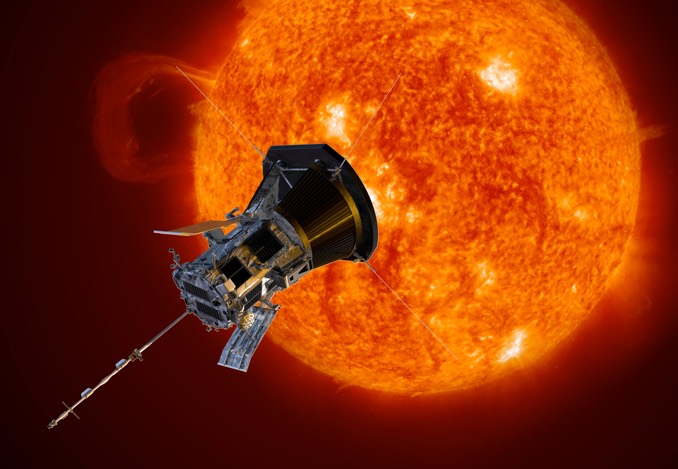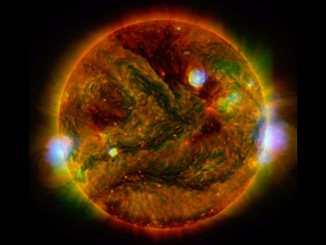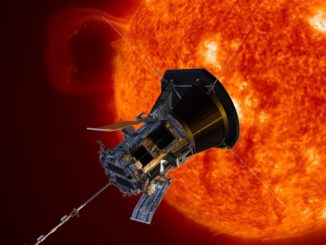
NASA’s Parker Solar Probe came through its first close encounter with the Sun’s hellish corona 5 November in excellent condition, mission managers say, enduring extreme temperatures and radiation as it passed within 24 million kilometres (15 million miles) of the Sun’s visible surface at a record 343,000 kilometres per hour (213,200 mph).
“Parker Solar Probe was designed to take care of itself and its precious payload during this close approach, with no control from us on Earth, and now we know it succeeded,” said Thomas Zurbuchen, associate administrator of NASA’s Science Mission Directorate at the agency headquarters in Washington. “Parker is the culmination of six decades of scientific progress. Now, we have realised humanity’s first close visit to our star, which will have implications not just here on Earth, but for a deeper understanding of our universe.”
Launched 12 August from Cape Canaveral in Florida, the spacecraft completed its first pass of the Sun in relative silence, collecting data from a suite of sophisticated instruments as it kicked off its mission to learn more about what heats up the corona and accelerates charged particles in the solar wind.
On 7 November, two days after close approach, Parker sent a brief “status beacon” to flight controllers at Johns Hopkins University’s Applied Physics Laboratory indicating it was in good shape and collecting data as planned.
The 5 November flyby was the first of some two dozen planned between now and 2025, subjecting the spacecraft’s protective heat shield to temperatures as high as 437 degrees Celsius (820 Fahrenheit). Over the course of the mission, the close-in aim point will drop to less than 6.4 million kilometres (4 million miles) with temperatures expected in the 1,400 C (2,500 F) range and peak velocities around 692,000 kph (430,000 mph).
Parker’s initial encounter began on 31 October and continued through 11 November. Recorded science data will be transmitted back waiting scientists over the next several weeks. The spacecraft will make a gravity-assist flyby of Venus on 12 December and carry out its second close encounter with the Sun on 4 April 2019.



